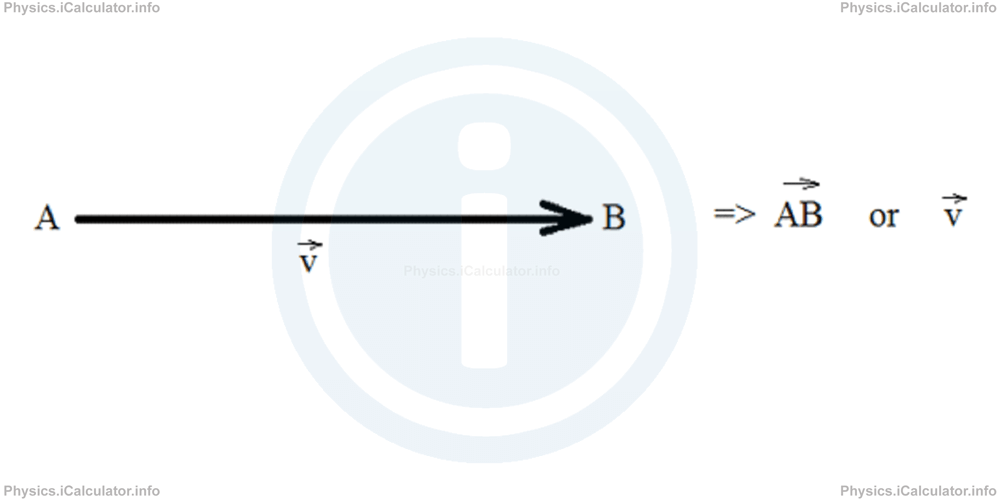Menu
Physics Lesson 2.1.1 - Vectors and Scalars
Please provide a rating, it takes seconds and helps us to keep this resource free for all to use
Welcome to our Physics lesson on Vectors and Scalars, this is the first lesson of our suite of physics lessons covering the topic of Vectors and Scalars, you can find links to the other lessons within this tutorial and access additional physics learning resources below this lesson.
Vectors and Scalars
Let's try to understand what is wrong with the situations described above. Thus,
- The information is incomplete, as your cousin didn't provide any direction. You cannot hang around the city to find her, despite she has informed you that she is at 2 km away from the city hall. Indeed, she may be anywhere in the circle whose centre is at the city hall and whose radius is 2 km long.
- The information is incomplete. Your father didn't tell you the direction in which you should pull the table. There are many possible directions to pull the table.
- The first thing to do in this case is trying to find the directions using the map and the compass. Then you can sail in the correct direction.
- In this case, you need to know whether you have to kick the ball gently or strongly. The person may be near or far away, so you have to know how to kick the ball despite you already know the direction.
In all these examples, there was some missing information. It was missing either the magnitude or the direction of the action you had to do. Therefore, it is quite impossible for you doing what you were told to.
The concept of vector helps you to understand the point. A vector (in mathematics) is a quantity that has both a magnitude (numerical value or size) and a direction. If one of them is missing, the information is incomplete.
Geometrically, a vector is represented through an arrow. The tip shows the direction and the ending point, while the toe shows the starting point of the vector. Symbolically, the vector is denoted in two possible ways:
- by two uppercase letters where the first letter shows the starting point and the second one the ending point of the vector, or:
- by a single lowercase letter at middle of the vector.
Also, a small arrow must be placed above the letter/s representing the vector to distinguish it from a segment. Look at the figure below.

On the other hand, a quantity which has only magnitude (does not involve direction), is known as "scalar". For example, real numbers are scalars. You simply need to know their numerical value to have a complete information regarding the quantity involved. For example, we know that 5 > 3 because we compare the magnitudes of these two numbers (scalars).
More Vectors and Scalars Lessons and Learning Resources
Whats next?
Enjoy the "Vectors and Scalars" physics lesson? People who liked the "Vectors and Scalars lesson found the following resources useful:
- Description Feedback. Helps other - Leave a rating for this description (see below)
- Vectors and Scalars Physics tutorial: Vectors and Scalars. Read the Vectors and Scalars physics tutorial and build your physics knowledge of Vectors and Scalars
- Vectors and Scalars Video tutorial: Vectors and Scalars. Watch or listen to the Vectors and Scalars video tutorial, a useful way to help you revise when travelling to and from school/college
- Vectors and Scalars Revision Notes: Vectors and Scalars. Print the notes so you can revise the key points covered in the physics tutorial for Vectors and Scalars
- Vectors and Scalars Practice Questions: Vectors and Scalars. Test and improve your knowledge of Vectors and Scalars with example questins and answers
- Check your calculations for Vectors and Scalars questions with our excellent Vectors and Scalars calculators which contain full equations and calculations clearly displayed line by line. See the Vectors and Scalars Calculators by iCalculator™ below.
- Continuing learning vectors and scalars - read our next physics tutorial: Addition and Subtraction of Vectors
Help others Learning Physics just like you
Please provide a rating, it takes seconds and helps us to keep this resource free for all to use
We hope you found this Physics lesson "Vectors and Scalars" useful. If you did it would be great if you could spare the time to rate this physics lesson (simply click on the number of stars that match your assessment of this physics learning aide) and/or share on social media, this helps us identify popular tutorials and calculators and expand our free learning resources to support our users around the world have free access to expand their knowledge of physics and other disciplines.